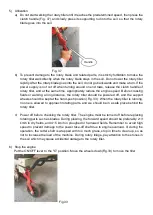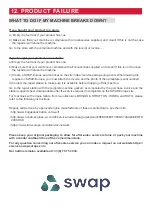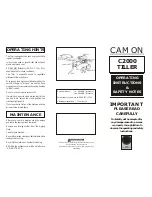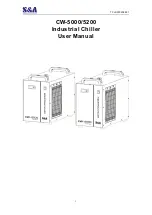
5) Utilization
a) Do not start walking the rotary tiller until it reaches the predetermined speed, then press the
clutch handle (Fig. 37) and slowly press its supporting rod into the soil, so that the rotary
blade goes into the soil.
Fig. 37
b) To prevent damage to the rotary blade and related parts, it is strictly forbidden to make the
rotary tiller walk directly when the rotary blade stays in the soil. Do not lower the rotary tiller
rapidly. After the rotary blade goes into the soil, do not go backwards and make a turn. If the
power supply is not cut off when turning around on end rows, release the clutch handle of
rotary tiller, and at the same time, appropriately reduce the engine speed. Before crossing
fields or walking a long distance, the rotary tiller should be powered off, and the support
wheels should be kept at the hand-push position (Fig. 33). When the rotary tiller is running,
no one is allowed to approach rotating parts, and we should be in a safe place behind the
rotary tiller.
c) Power off before checking the rotary tiller. The engine must be turned off before replacing
rotating parts such as blades. During plowing, the forward speed should be preferably 2~3
km/h in dry fields, and 4~5 km/h in ploughed or harrowed fields. Remember to avoid high
speed to prevent damage to the power take-off shaft due to engine overload. If, during the
operation, the cutter shaft is wrapped with too much grass, stop in time to clean up, so as
not to increase the load of the machine. During rotary tillage, pay attention to the stones in
the soil which may cause accidental damage to the rotary tiller.
6) Stop the engine
Put the ON/OFF lever to the "O
” position. Move the wheels down(Fig.33) to move the tiller
Fig.33
Handle
Содержание RAC173PTIL-A
Страница 14: ...Fig 30 Fig 31 Fig 32...
Страница 23: ...BUILDER SAS 32 rue Aristide Berg s ZI 31270 Cugnaux France Made in PRC 2022...







































